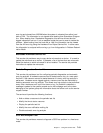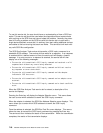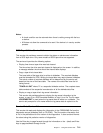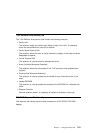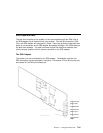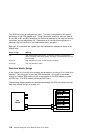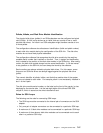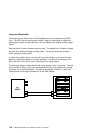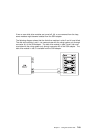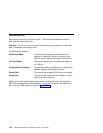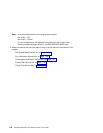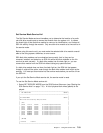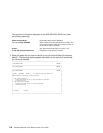Pdisks, Hdisks, and Disk Drive Module Identification
The
physical disk drives (pdisks)
in an SSA subsystem can be configured as logical
units (LUNs). A LUN is also known as an
hdisk
, and can consist of one or more
physical disk drives. An hdisk in an SSA subsystem might therefore consist of one
or more pdisks.
The configuration software also allocates an identification (hdisk and pdisk number)
to each disk drive module during the configuration of the SSA link. The disk drive
modules do not have fixed physical addresses.
The configuration software first recognizes the disk drive module by the machine-
readable serial number that is written on the disk. Then, it assigns an identification
that is related to the position of the disk drive-module in the SSA string. After config-
uration, the disk drive module always has the same identification. It can be moved
to any position on the SSA link, but can always be found by the software.
Service actions are always related to physical disk drives. For this reason, errors
that occur on SSA disk drives are always logged against the physical disk drive
(pdisk).
The numeric identifier of pdisks, hdisks, and disk drive module slots of the system
unit are not related to each other. For example, pdisk1 is not necessarily installed in
slot 1 of the 6-pack.
The disk drive module serial number, on the label on the front of the carrier, is also
displayed by the service aids. It is the last eight digits of the drives IEEE SSA
unique ID, which is stored on the drive's electronics card.
Rules for SSA Loops
The following are the rules for connecting SSA loops:
The SSA loop must be connected to the internal pair of connectors on the SSA
adapter.
Only one pair of adapter connectors can be connected to a particular SSA loop.
A maximum of 18 disk drive modules can be connected in a particular SSA loop.
A maximum of three dummy disk drive modules can be connected next to each
other in a particular SSA loop.
Chapter 7. Using the Service Aids 7-27



